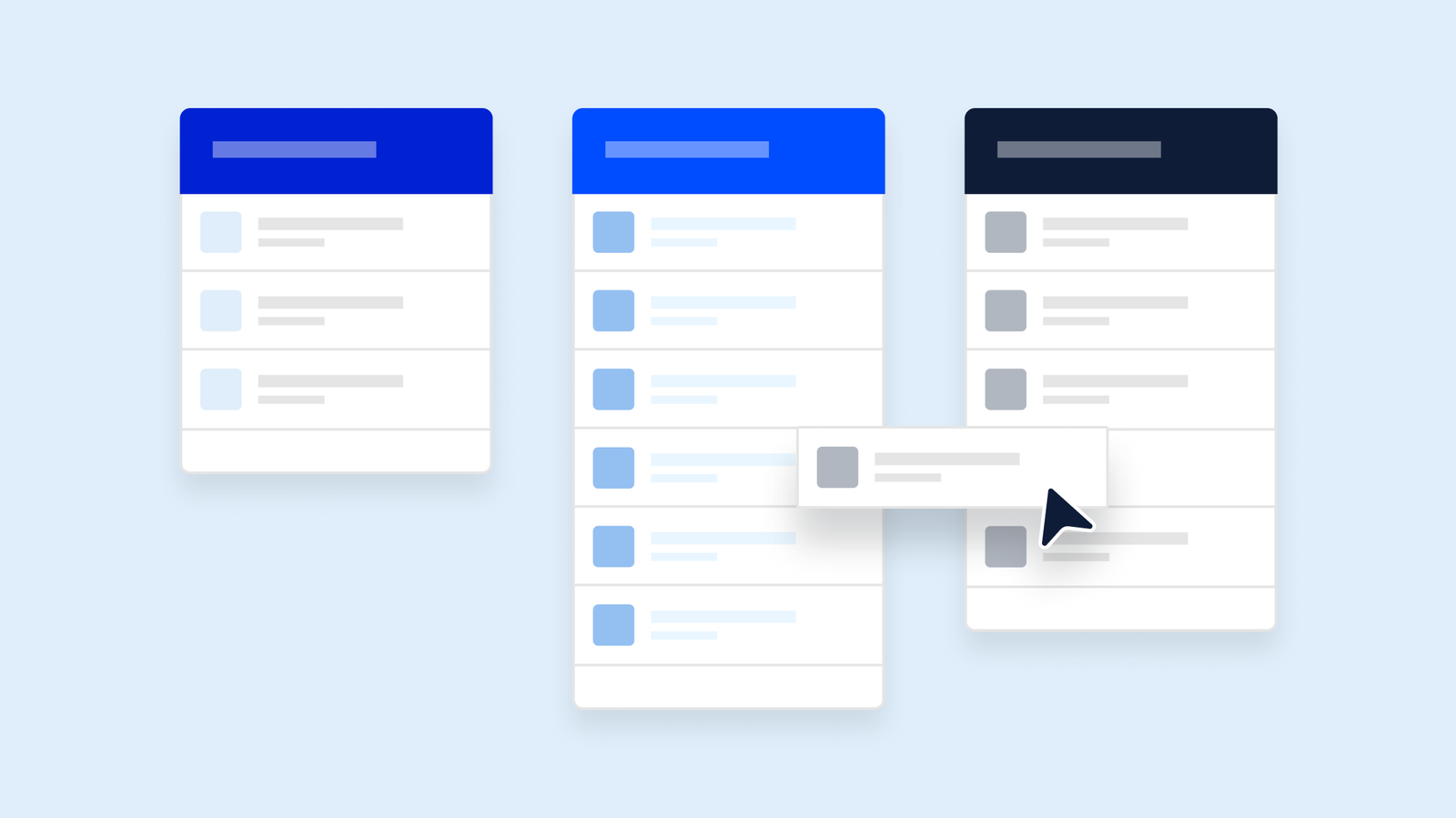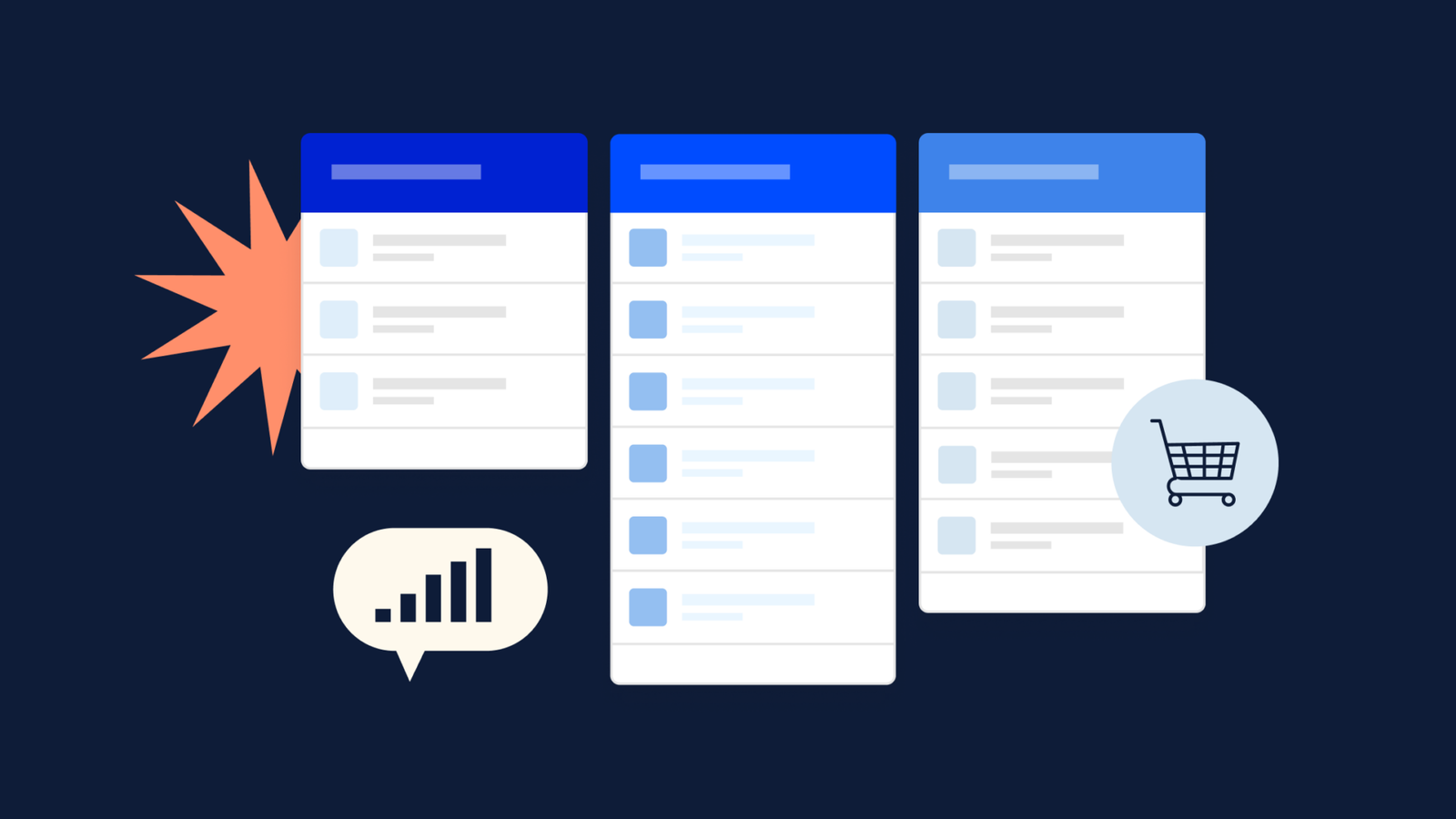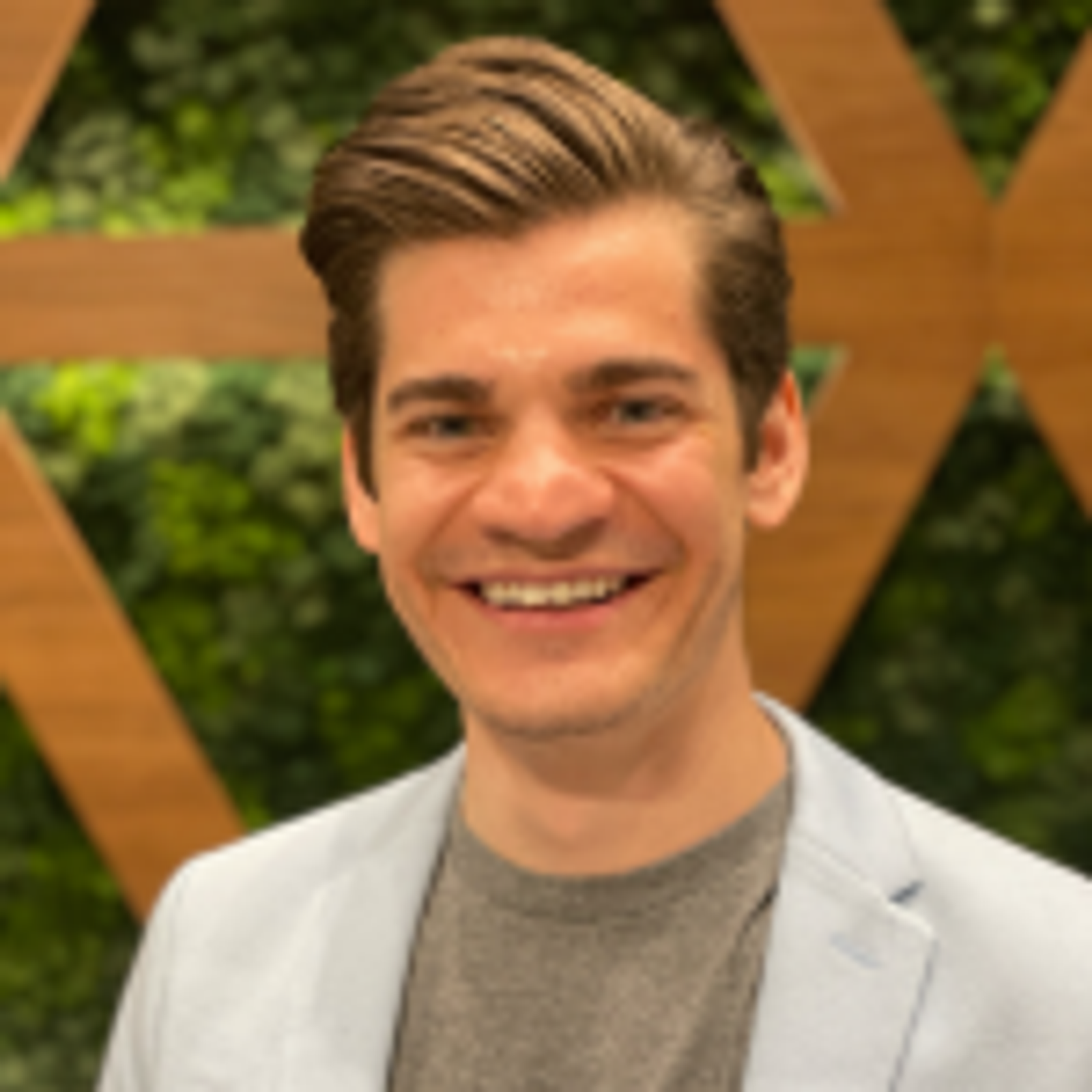The busy holiday season is upon us, and with it comes a massive opportunity for businesses to capitalize on holiday purchases. However, when the pandemic hit in 2020, global retail sales took a hit. While more people are shopping online than ever before, they’re also more cautious with their spending.
Understanding these evolving consumer behaviors is crucial to crafting a holiday marketing strategy that attracts attention and converts browsers into buyers. Simply offering discounts is no longer enough; today's consumers see personalized experiences, value-driven offers, and seamless online interactions.
So, how can you create a holiday marketing strategy that reliably boosts sales?
In this guide, you will discover actionable strategies that can help boost your holiday purchases and learn how to engage with customers during the busiest shopping season of the year using ActiveCampaign’s powerful marketing automation tools.
What is holiday marketing?
Holiday marketing involves tailoring your marketing activity to align with the holiday spirit and the seasonal rush of holiday purchases. It often involves crafting specific sales, promotions, and campaigns designed to capture the attention of customers actively looking for holiday deals and holiday gift ideas.
Holiday marketing strategies typically kick off before the holiday season, continue during the peak shopping days, and may extend into post-holiday promotions. Companies use a variety of channels—such as paid ads, email marketing, social media, and even traditional outlets like TV—to promote their holiday offers.
For example, take a look at Black Friday. Each year, businesses launch massive online and in-store discount campaigns, targeting customers eager to find the best holiday deals. These campaigns aim to increase engagement from existing customers, attract new ones, boost holiday purchases, and ultimately drive revenue.
By tapping into the festive atmosphere and meeting customers where they are, holiday marketing offers brands the chance to build stronger connections, raise brand awareness, and make the most of one of the most significant shopping times of the year.
Why is holiday marketing important?
Holiday marketing is important because it's the most customer-ready time to increase sales.
Additionally, with your customers in the spirit of receiving your marketing message differently than they would any other time of the year, you may also increase brand awareness and customer retention.
Sure, holiday marketing is a lot of work. It's the busiest time of year for many retail and ecommerce businesses. But there are some real benefits to holiday marketing that make it worthwhile. Let's take a look at what these are.
Generate more sales
Retailers expect their sales to increase significantly over the holiday period. Why? Because people tend to spend more during the holidays, whether they’re buying gifts, redeeming special offers, or using gift cards and vouchers. Offering exclusive discounts can further entice customers to make holiday purchases and drive even more sales.
Take a look at how retail sales in the clothing industry increased every December from 2017 to 2021:
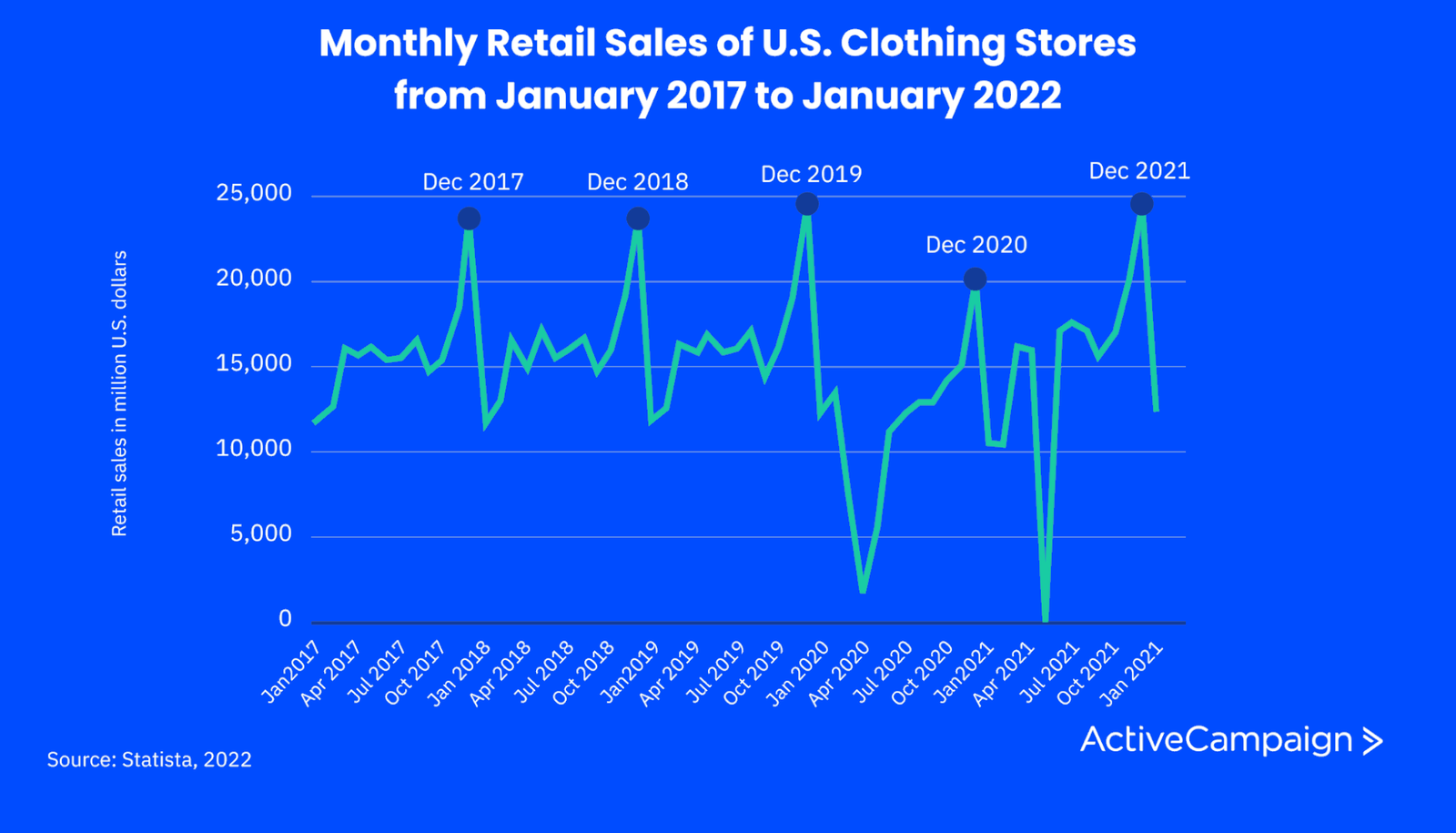
While this trend is specific to clothing, similar patterns have existed across many retail and e-commerce sectors since December marks the peak of the holiday shopping season. Consumers are actively seeking the best deals during this time, and by upping your marketing efforts around peak times and promoting exclusive discounts, you have a higher chance of boosting your sales.
Raise brand awareness and build trust
The festive season is the ideal time to get your brand in front of new holiday shoppers.
Look at Walmart, for example. It used influencer marketing to promote its Walmart+ membership ahead of the holiday season.
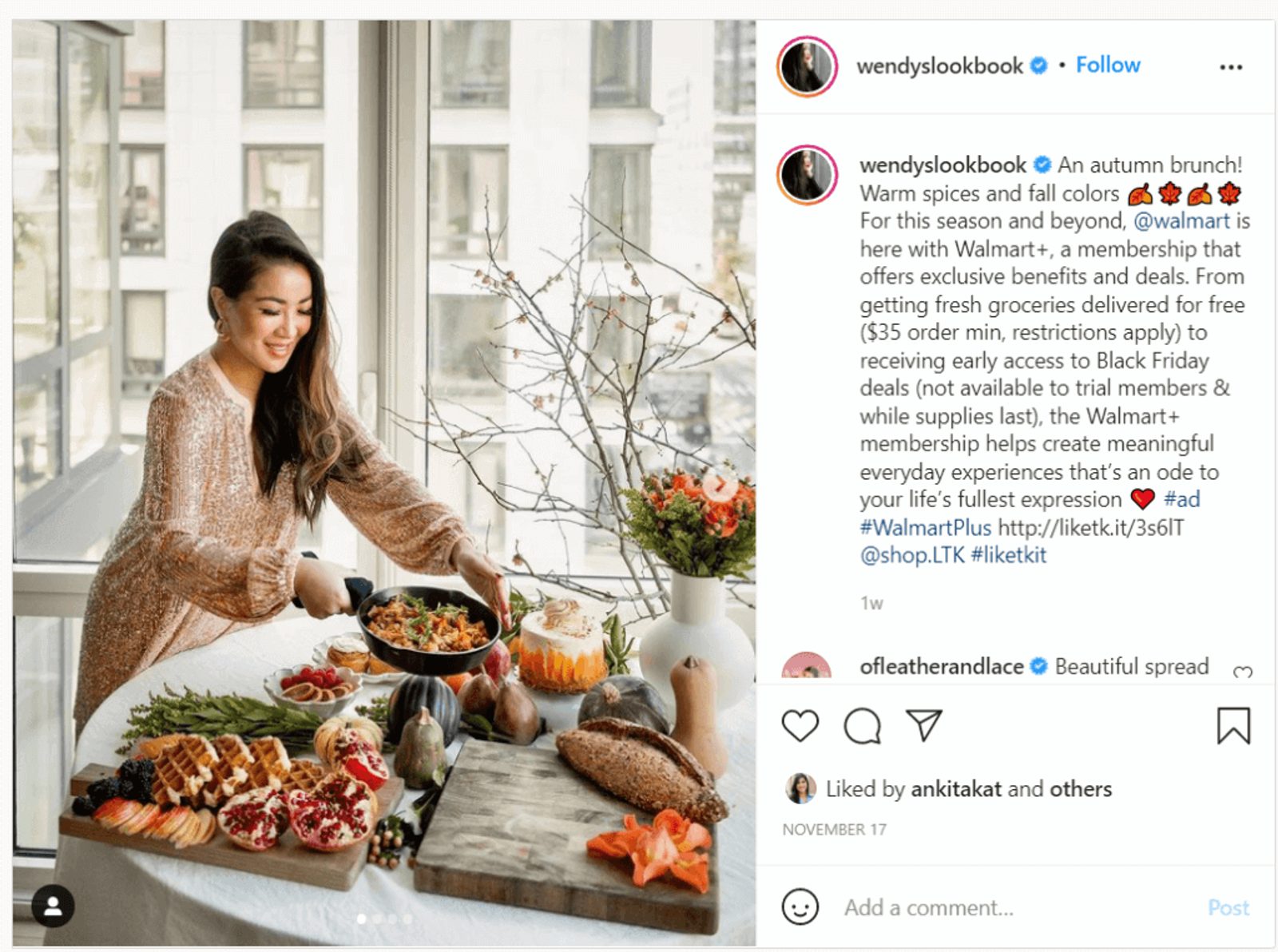
Walmart kills two birds with one stone. It reaches a broader audience by partnering with an influencer and builds trust with the audience.
Trust plays a big part in consumers' decision-making process. 86% of consumers say they're willing to pay more for something from a brand they trust.
When done right, you can see how holiday marketing can help you reach a wider audience and build trust at the same time.
Develop customer loyalty
Marketing around the holidays is the perfect opportunity to gain loyal customers by targeting your existing ones with unique deals and exclusive discounts. One way to do this is through a loyalty program that rewards repeat customers with discount codes or special offers during your holiday campaigns. These incentives drive more sales and increase the likelihood of long-term customer retention.
With automation, you can target existing customers with personalized messaging, delivering exclusive rewards based on their shopping habits or interactions. For example, a loyalty program could offer points for every purchase made, redeemable for a discount on future holiday purchases. This approach boosts immediate sales and encourages customers to return and engage with your brand after the holiday season.
L.G.R World shows how powerful personalization can be. The Italian premium eyewear company used ActiveCampaign's customer experience automation to send tailored messages to customers, leading to a 143% revenue increase and stronger customer loyalty. With automation tools like these, you can deliver tailored offers and exclusive discounts to your loyal customers through email and social media, all while ensuring a consistent, personalized experience.
When should you start marketing during the holidays?
Timing is everything when it comes to holiday marketing, and starting your campaigns at the perfect time can make all the difference. Ideally, you should begin your holiday marketing activity at least two weeks before the holiday season officially begins. However, planning should start much earlier—at least a few months in advance. This early preparation allows you to create a well-thought-out strategy to help you stay ahead of the competition.
Many holiday sales, like Black Friday and Cyber Monday, kick off in the U.S. at the end of November. However, consumers begin their holiday purchases earlier every year, with many starting in October or even late September. Launching your holiday marketing campaigns early can capture this early-bird audience and build anticipation for your promotions. Whether it's through email campaigns, social media teasers, or exclusive early-access special offers, the goal is to get in front of your customers before your competitors do.
Planning ahead also allows you to be more strategic with your resources. You’ll have time to segment your audience, fine-tune your messaging, and create engaging content across multiple channels. By starting early, you’re not rushing to meet last-minute deadlines and can focus on delivering a memorable experience to your customers. Moreover, early planning gives you room to adjust and optimize your campaigns as the season progresses, making sure your offers stay relevant and engaging.
Starting your holiday marketing early can be the key to standing out in a crowded market where every brand is vying for attention. It gives you the competitive edge to meet and exceed your sales goals for the season.
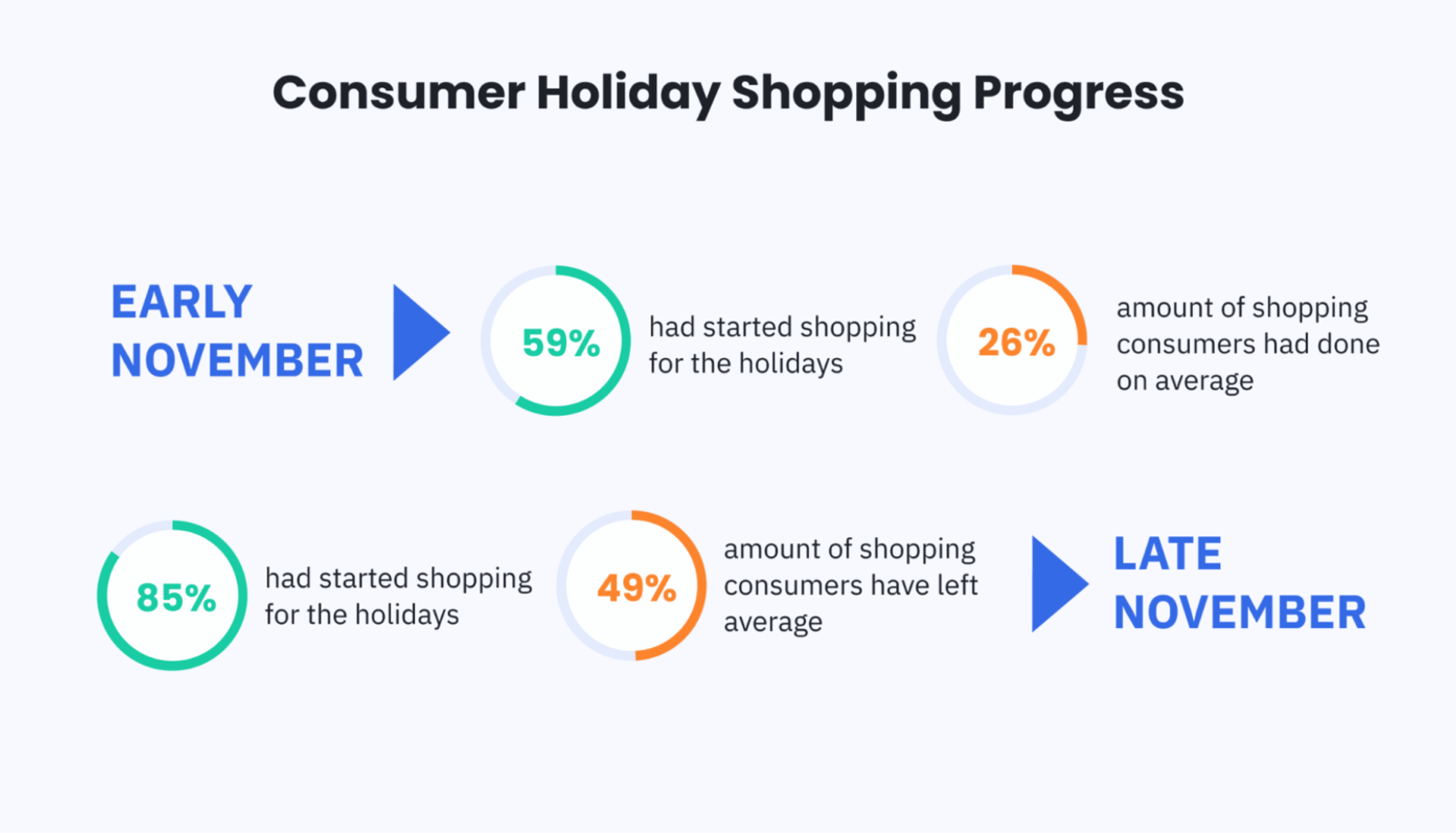
How to create a holiday marketing strategy
From Black Friday to Cyber Monday and all the holidays surrounding them, keep reading to discover our top holiday marketing tips to create a foolproof strategy.
Review your past holiday marketing campaigns
One of the best ways to improve your current holiday marketing strategy is by reviewing the performance of your past campaigns. Take the time to analyze what worked and what didn’t, using this information to inform your new approach. This includes assessing your messaging, creativity, timing, and any offers that resonated most with your audience.
A key element of this review is examining your first-party data, which includes the insights you've gathered directly from your customers—such as their purchasing behaviors, preferences, and engagement with your past holiday campaigns. Using first-party data can help you better understand how your audience responded to specific promotions, which products were most popular, and what types of communication drove conversions. This data allows you to craft more targeted and personalized marketing efforts that resonate with your customers on a deeper level.
For example, if an email campaign from last year drove higher-than-expected sales of gift cards, review the copy, subject lines, and timing of that email to replicate its success. Were there specific exclusive discounts or special offers that pushed conversions? By understanding these factors, you can replicate successful elements in this year's campaigns and fine-tune areas that underperformed.
If you don’t have much historical data or this is your first holiday marketing campaign, don’t worry. Start by reviewing what your competitors are doing and analyzing industry trends. However, as you gather first-party data over time, you’ll have more valuable insights to create even more effective and data-driven strategies in the future.
Outline your goals and objectives
When developing your holiday marketing plans, make sure to define clear goals and objectives for the season. Ask yourself what you want to achieve—whether it’s increasing sales, boosting brand awareness, or reaching a new market segment. Understanding consumer behavior during the holidays is key to setting actionable objectives. For example, if your target audience tends to shop early, your campaigns should be designed to capture early-bird shoppers with compelling offers and promotions.
Whatever your goals, they need to be specific, measurable, and realistic. This is where SMART goals can help. The SMART framework ensures that your objectives cover all necessary bases, making tracking progress and staying on course easier.
Here’s a breakdown of SMART goals:
- Specific: Be clear about what you want to achieve.
- Measurable: Set goals that can be quantified, such as a percentage increase in sales.
- Achievable: Ensure your goals are realistic, given your resources.
- Relevant: Align your objectives with overall business and holiday marketing plans.
Time-bound: Set deadlines for achieving your goals.
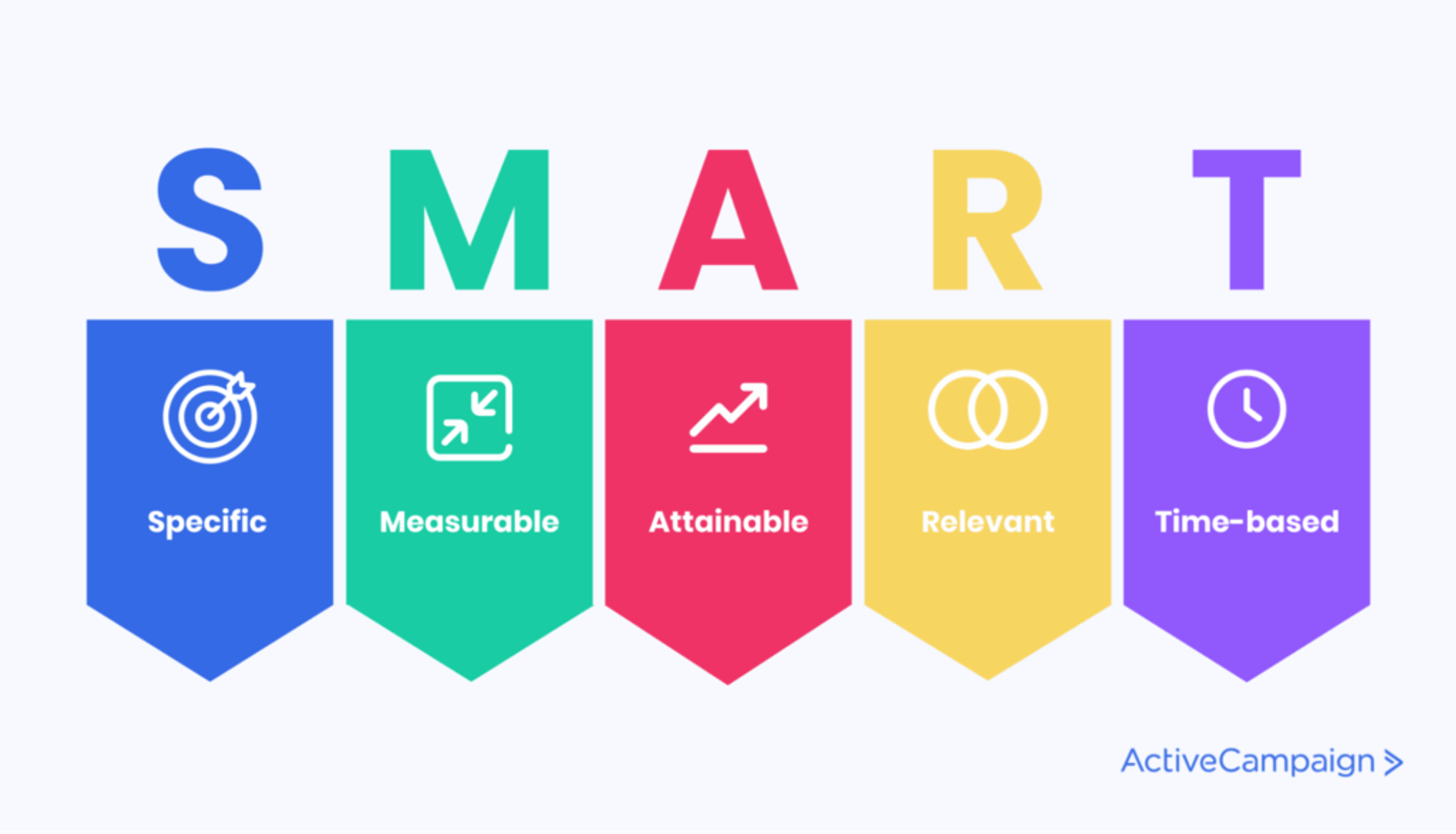
For example, a SMART goal might look like this: "Increase sales by 20% during Q4 by offering exclusive discounts and holiday promotions across multiple marketing channels." This kind of objective is actionable because it is based on both consumer behavior and strategic planning, allowing you to measure success and adjust your campaigns as needed.
Setting realistic marketing goals and basing your holiday marketing plans on data-driven insights can create a more focused and effective strategy for the season.
Identify your target market
With so many consumers valuing a personalized digital experience, you need to tailor your marketing plan to what your consumers want.
But if you don't know who you're trying to target, how can you market to them?
There are a few ways to identify your target audience:
- Review your current customer base: What's the current demographic for your business? Identify who they are by reviewing previous sales, email subscribers list, and social media followers.
- Look at your competition: Are your competitors targeting an audience you're not? Look at what they're doing to inform who you should (or shouldn't) target.
- Analyze your product/service: Is there a market you've not considered targeting before? Review your product or service and consider if you could market it to a new audience.
Once you've determined your target, you can check if your marketing strategy matches their wants and needs. Customer experience automation is an invaluable tool here.
By adjusting your marketing message based on customer interactions, you can create a personalized buying experience.
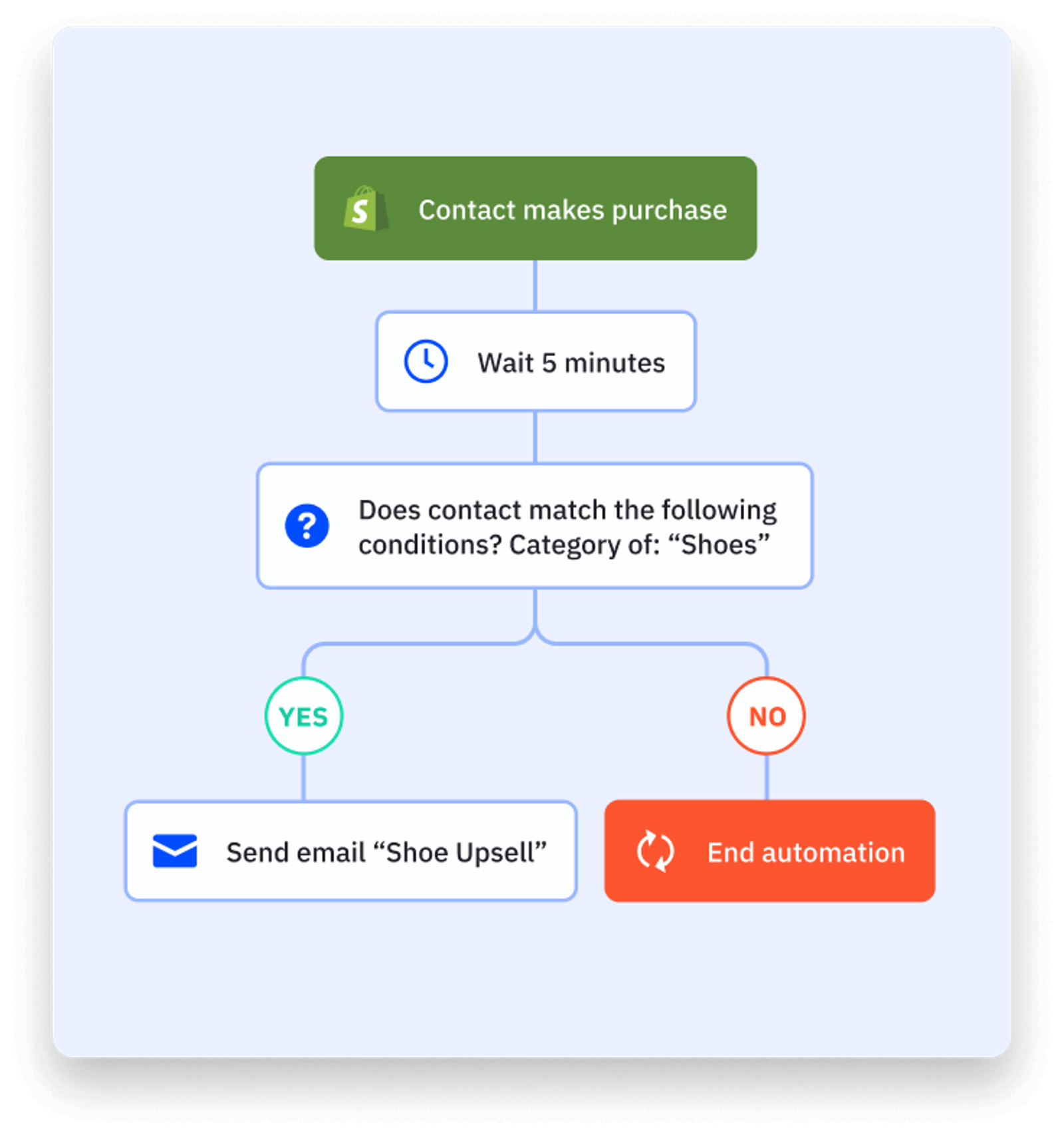
As a result, your customers will get a better experience, and you'll have a higher chance of increasing sales.
Use the right marketing channel
In 2020, there were 256 million digital shoppers in the U.S., a number expected to reach 291.2 million by 2025. Globally, over 2.14 billion people bought goods online in 2021, a significant jump from previous years. With over 25% of the global population shopping online—many of them via mobile devices—it’s clear that digital channels are more important than ever for reaching potential customers.

With so many online platforms available, how do you choose the best ones for your business? The answer varies based on your audience and goals, but the key is to focus on the channels where your target customers spend their time. Below, we’ve outlined a few marketing channels to consider for your holiday campaigns.
Social media
Social media marketing involves posting content for consumers to see. It helps you build relationships and nurture consumers through the sales funnel.
However, it only works if you use the right social platforms to reach your target audience.
Facebook and Instagram are the most popular platforms. It's 1 of the best ways to reach young professionals between 25-34. This age group makes up 30.1% of Facebook's total audience. For Instagram, it's 31.7%.
But just because they’re the most popular doesn’t mean they’re the best fit for your business. Depending on your target audience, you may need to explore other social media platforms to reach the right customers.
Do some research to identify the social media platforms your audience uses and focus on creating social media campaigns that resonate with them on these specific platforms.
Search engine advertising
Search engine advertising, also known as pay-per-click (PPC), allows businesses to show ads to targeted audiences.
For example, you can show ads directly to someone searching for a relevant keyword on Google:

PPC is only worth the investment if you target the right keywords. Update your ads with up-to-date holiday sale prices to drive more clicks and sales.
For consumer products, you can use Google Shopping Ads for market-specific products.
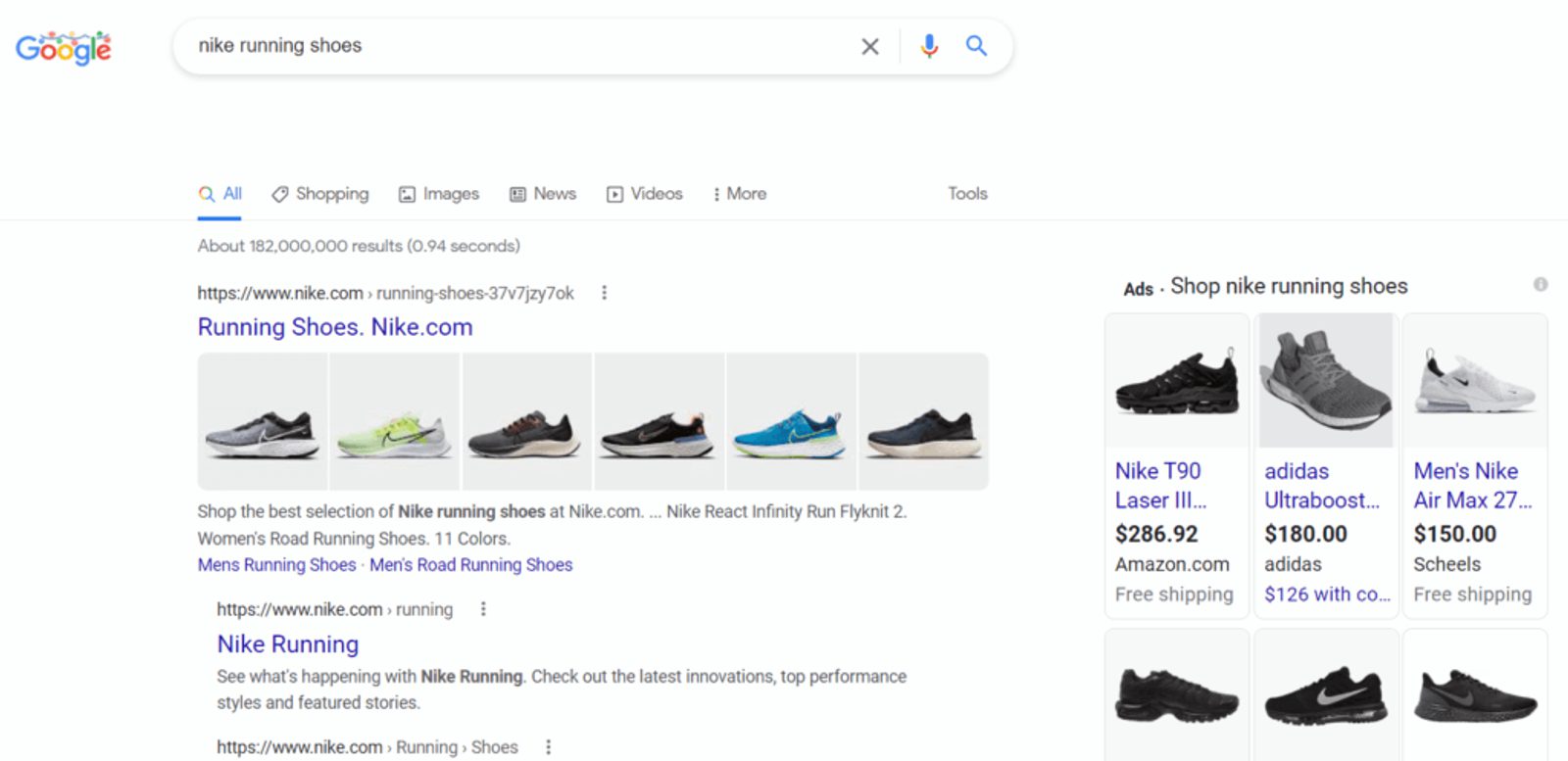
To optimize for the holiday season, make sure to update every relevant product listing with a sale price. You can also run a promotion, offering free shipping over X dollars spent, free gift wrapping, or more.
Email marketing
Email marketing mainly helps build relationships with existing and potential customers. When done right, it can play a vital role in converting leads into sales.
The real power of email lies in how you can personalize your marketing message with list segmentation and automation. Segmenting your audience allows you to send targeted emails based on consumer interests and demographics. Automating the process means you can send triggered emails based on their actions.
Soundsnap is a great example. The Cyprus-based company sells high-quality sound effects on a subscription basis.
Email has always been an important channel, but by adding automations, the company increased email revenue by 300%. And that was from just one simple automation, recommending packs related to specific sound effects.

Overall, it helps you create a personalized and unique customer experience.
Want some more email inspiration? Look at the dos and don’ts of Black Friday emails.
Create personalized holiday campaigns
Personalization is key to creating a memorable experience that truly connects with your customers during the holiday season. By taking advantage of your customer data, such as interests and past purchases, you can design campaigns that resonate with your audience on a personal level.
Using customer relationship management (CRM) software, track your customers' browsing habits and purchase history to send them tailored offers or updates they’ll genuinely appreciate. This will help increase engagement and boost your brand’s perceived value.
A simple yet effective way to stand out is by personalizing your emails. Start by adding your customer’s first name to the subject line—this small touch can significantly improve open rates and help create a more personalized connection. Additionally, use a personalized sender name by combining your first name with your company name so recipients immediately recognize who the email is from, adding to the overall memorable experience you want to deliver during the holiday season.
Create a holiday email strategy
Consumers constantly check their inboxes during the holiday season, hunting for the best holiday deals and exclusive offers. This makes email marketing one of the most powerful tools for driving engagement and conversions during the busy holiday season. A well-crafted email strategy helps you stay top of mind with your customers and can significantly boost your holiday sales.
To make the most of your email campaigns and social media posts, highlight your latest promotions, sales, and seasonal product lines. Personalization is key here—segment your audience based on their past purchases, interests, or behavior, and tailor your emails to each group. For example, you can send exclusive discounts or curated holiday gift suggestions to different customer segments.
You can also use email automation to streamline your holiday marketing efforts. Automating your email sequences allows you to send timely reminders about upcoming sales, important dates (such as shipping deadlines), and even thank-you emails after a purchase. By setting up automated campaigns, you can engage your customers without needing to manage each campaign manually, leaving you more time to focus on other areas of your business.
Consider incorporating exclusive discounts or limited-time offers in your holiday emails to create urgency and excitement. Whether you're reminding customers about a flash sale or offering free shipping for a limited time, these emails help encourage immediate action, turning engaged subscribers into loyal customers.
Focus on the customer experience
While the holidays are often filled with joy and celebration, they can also be a source of stress—particularly when it comes to holiday shopping. One of the most important things your business can do during this season is to alleviate that stress by focusing on the customer experience. By providing useful content, timely support, and seamless shopping experiences, both online and in-store, you can create a memorable experience that keeps customers coming back.
For example, if you’re in the food and beverage industry, consider offering simple holiday recipes or tips for making festive meals easier. This provides valuable information and subtly encourages more sales by keeping your brand top-of-mind during the holiday season. Similarly, a fashion retailer could offer styling tips for holiday parties or suggestions for holiday gifts, enhancing the customer experience while connecting it directly to your products.
No matter your industry, the key is to produce content that meets your customers' needs and solves their holiday-related challenges across multiple social media channels. Helpful guides, curated gift suggestions, and streamlined online shopping experiences across various social channels should be your focus to make the holidays easier and more enjoyable for your audience.
Tools like ActiveCampaign can play a crucial role in helping you deliver these experiences seamlessly. With ActiveCampaign, you can tailor your messages to individual customers, schedule reminders for special holiday deals, and create personalized journeys that make each interaction meaningful.
Real-life examples of holiday marketing
Before diving into your holiday marketing strategy, looking at what your competitors are doing is helpful. Reviewing competitors’ campaigns can provide valuable guidance, giving you inspiration for your strategy without the need to copy their approach. You might discover areas where your competitors have succeeded and find ways to differentiate yourself with more unique offers or promotions that stand out.
Now, let’s take a look at some real-life holiday marketing ideas from businesses that have successfully navigated the holiday season. These ideas can spark inspiration for your digital marketing strategy, giving you a framework for running a successful holiday marketing campaign while helping you avoid common pitfalls.
Hinge: What are you thankful for?
Hinge is an online dating app. During a holiday email marketing campaign in 2020, the company asked its email subscribers what they were thankful for.
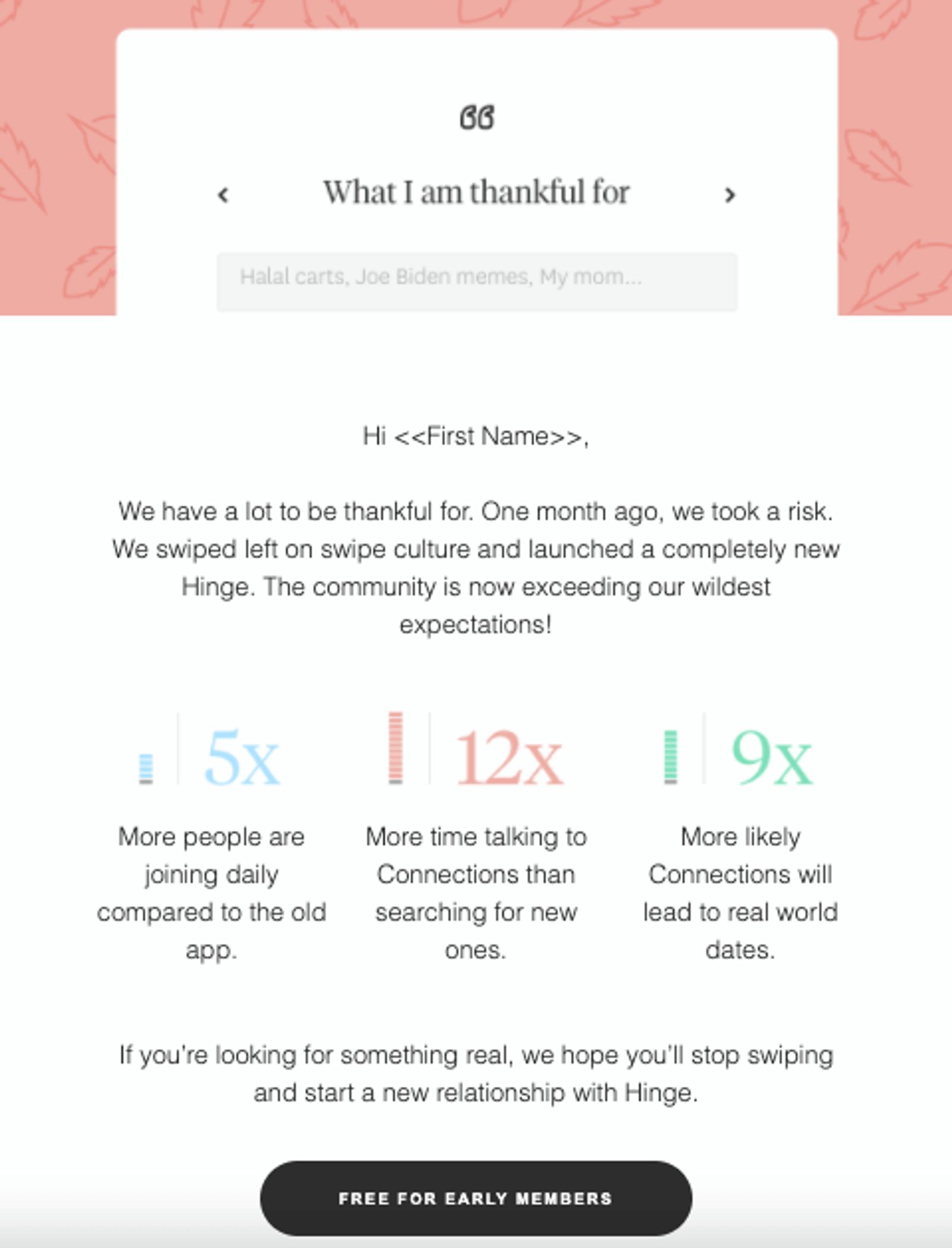
This email campaign is smart. It plays on emotions and sentimentality, which suits the time of year well.
By the end of 2020, Hinge's global downloads were up 63% compared to 2019. We're not saying this is due in full to this email campaign, but chances are it had something to do with it.
Tesco: No Naughty List
Even though it's primarily a brick-and-mortar supermarket chain, less restaurant and pub-dining meant record revenues for Tesco in 2020.
It topped the year off with a fitting holiday campaign, “No Naughty List,” that perfectly captured moments of the post-pandemic lifestyle, like doing meetings in bed or skipping a haircut.

TV ads aren't for every business. In this case, it worked because Tesco is a ubiquitous brand with a large budget. However, small businesses with smaller budgets can still learn and apply this to other channels, like YouTube Ads.
Elevate your holiday marketing strategy
Creating a successful holiday marketing strategy requires more than just discounts and promotions. It’s about understanding your audience, offering personalized experiences, and using the right tools to streamline your efforts. By planning early, focusing on customer experience, and leveraging automation, you can make the most of the holiday season’s potential.
As consumer behaviors continue to shift, especially during the busy holiday season, businesses must adapt to meet customer expectations.
Whether delivering the perfect holiday gift suggestions, engaging through social media, or offering seamless mobile shopping experiences, your holiday marketing strategy needs to be dynamic, data-driven, and customer-focused.
Maximize Your Results with ActiveCampaign
A key part of executing a flawless holiday marketing strategy is automation. With ActiveCampaign, you can tailor your campaigns to individual customer preferences, ensuring that every interaction is relevant and timely.
ActiveCampaign’s powerful automation tools allow you to build personalized email campaigns, retarget customers, and optimize your marketing across channels—without the extra workload. From segmenting your email lists to scheduling personalized messages that reach customers when they’re ready to shop, our platform makes it easier to drive more sales.
Ready to take your holiday marketing to the next level? With ActiveCampaign’s 14-day free trial, you can create meaningful customer relationships beyond the holiday season, boosting engagement and revenue.
Frequently Asked Questions
Here are a couple questions we get often about creating a holiday market strategy.
What holidays have the most sales?
In the United States, Christmas is the holiday with the most sales by far. In fact, in 2023, Christmas reached $964.4 billion in sales.
Coming in second after Christmas, Labor Day reached $33.9 billion in sales, and Mother's Day came in third with $28.1 billion. The holidays with the least sales were Thanksgiving, 4th of July, and Halloween (according to Financial Holdings, 2021).
When should I start a Christmas marketing campaign?
Beginning Christmas marketing at least 2-3 months in advance works best. This is because the buying process starts a few months before the actual holiday as people search for the perfect gifts.
By starting the marketing process early, you can show your potential customers that your products are the best options. You'll be able to nurture them so that when it's finally time for them to make a purchase, they'll choose you above competitors.
Why are holiday sales important?
Holiday sales should be an essential part of any business's marketing strategy. This is because consumers have come to expect holiday sales, discounts, coupons, and other promotions over the holiday season.
Offering sales means your business will get more exposure online, and more customers who browse your website will make a purchase instead of simply scrolling through. If they enjoy your product, they'll likely return for more (even after the holidays).



